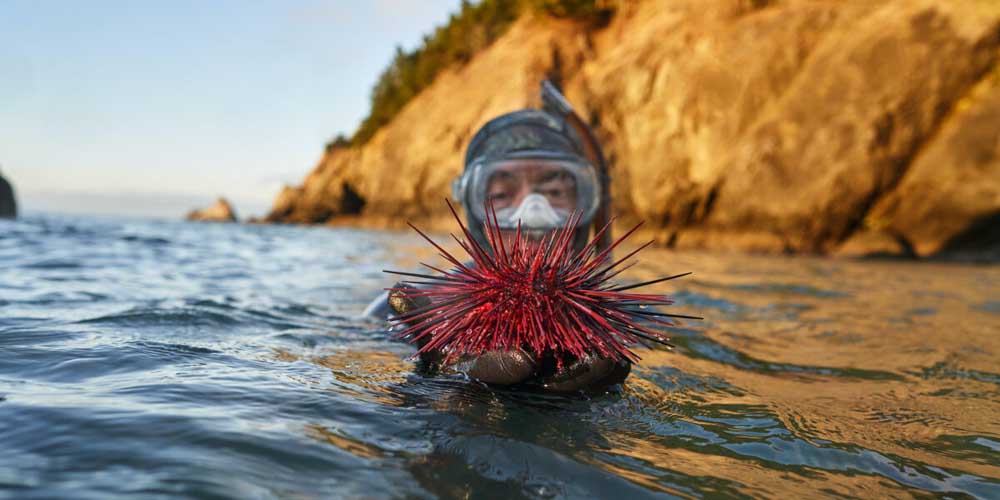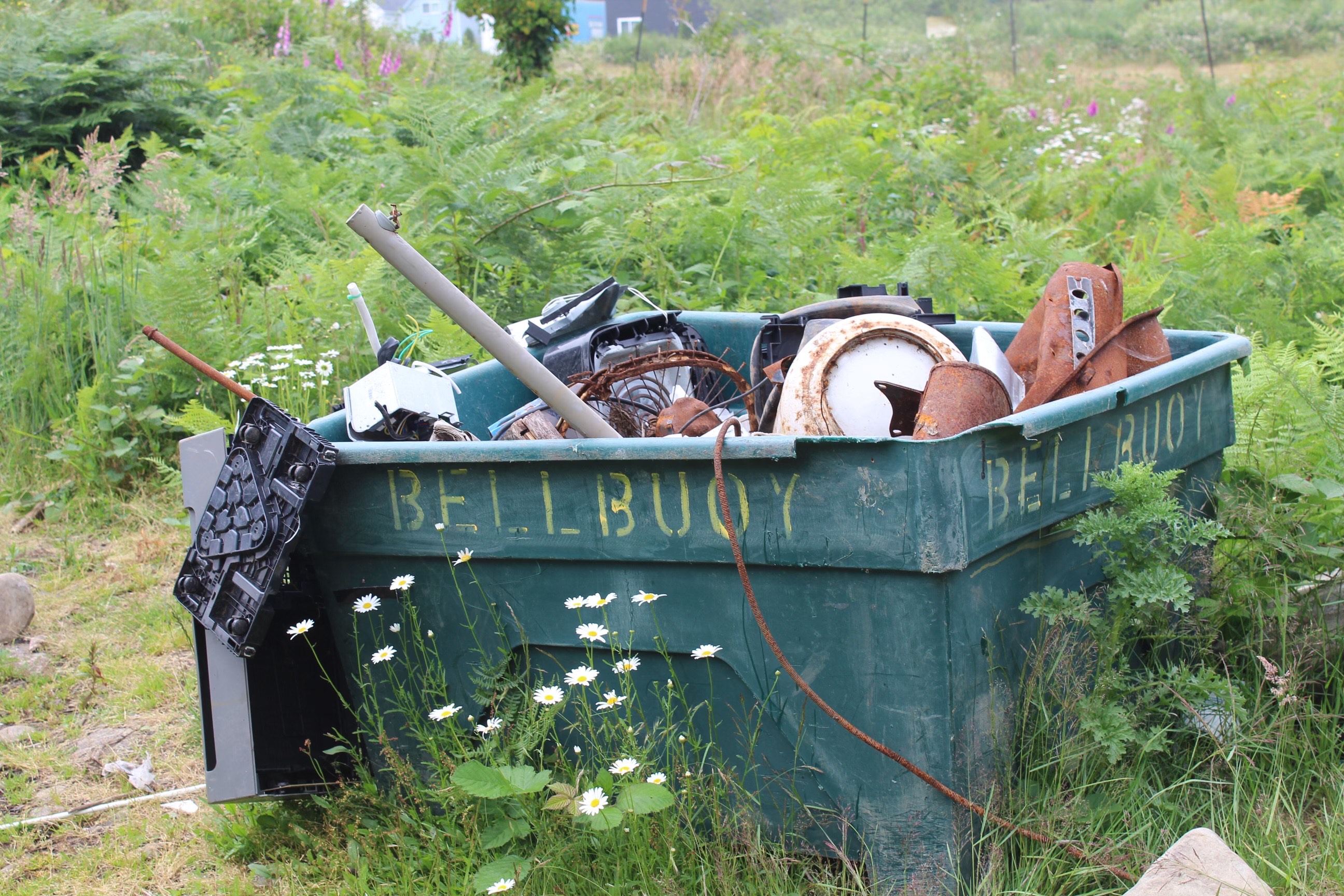Oregon’s underwater forests are vanishing
Published 11:14 am Tuesday, July 30, 2024

- The Oregon Kelp Alliance, a nonprofit, launched in 2019 in Port Orford.
On a chilly May morning at a sandy beach 15 miles southwest of Coos Bay, marine ecologist Sara Hamilton poured hot water from a thermos into her thick wetsuit, neoprene dive boots and gloves. Snorkeling mask and fins in hand, she made her way toward the jutting headland of Cape Arago State Park, across slippery rocks draped in seaweed, mussels and barnacles and crevices teeming with green sea anemones.
Hamilton eased herself into the ocean, a frigid 49 degrees that day, followed by several colleagues who braced themselves on surf-drenched rocks. But the waves crashed too high, sending the team into shallower waters before they floated and dove down.
A lush, towering kelp forest had sprung up under the waves in this cove in each of the past three summers, providing refuge to juvenile rockfish and salmon, shrimp, whales and countless other creatures. But it was unclear if it would regrow this year or become the latest casualty of an upended marine ecosystem that could herald the future impact of global warming on Oregon’s coast.
For millennia, underwater forests of seaweed or large brown algae stretched from the seafloor to the ocean’s surface, forming canopies, much like trees, and providing food, shelter and hunting grounds to countless animals. Bull kelp, the predominant species found along the southern third of Oregon shores, is one of the world’s fastest growers — rising at a rate of up to 10 inches per day and reaching heights of up to about 100 feet, establishing itself as the sequoia of the seas. Kelp has helped protect the coastline from storms and supported local fisheries, tribal fishing and cultural practices.
But over the past decade, according to new data, Oregon lost more than two-thirds of that kelp canopy.
Mysterious illness
Kelp’s troubles on the West Coast started in 2013 when a mysterious illness began to decimate sunflower sea stars, the sole predators of purple sea urchins in Oregon. In turn, the purple urchins — small, spiky orbs that are native to the coast but previously dwelled in the crevices of tide pools, passively feeding on pieces of drifting kelp — had a bonanza population spurt.
Warmer water didn’t cause the stars’ disease, but scientists say the starfish died faster because of it. They have concluded that “the Blob,” an extreme heat wave in the Pacific Ocean that in 2014 raised temperatures between 4 and 10 degrees above average and lasted for more than 700 days, exacerbated both the star die-off and the urchin explosion. Without sunflower sea stars — considered the largest and fastest of the starfish species, able to grow up to 24 arms and easily outrun prey — hordes of purples took over underwater forests. They overgrazed the kelp, forming “urchin barrens,” lifeless zones covered with hungry purple urchins and not much else.
The problem was not unique to the Pacific Ocean; sea urchins overran kelp forests across the globe, from Tasmania to Norway. On the West Coast, a collapse was first identified in Northern California in 2019 when a study chronicled the abrupt decline of kelp there by more than 90% in 2014. Similar warning signs emerged in southern Oregon: the wads of snake-like tangles that had once washed up on beaches were becoming scarce and the dense floating mats of kelp along the shores had nearly vanished — and with them, the fish and animals that had once lived and hunted there.
Despite the red flags, action to probe the extent of kelp’s loss and to stave it off has been slow. Oregon’s craggy, exposed shoreline and murky waters meant few divers had been taking stock of underwater conditions. And because the state doesn’t allow commercial harvesting of kelp, wildlife officials had neither the mandate nor the funding to regularly survey or monitor the situation.
In the void, a nonprofit launched in 2019 in the small coastal town of Port Orford, about 60 miles north of the California border, bringing together local fishermen, researchers, tribal members, university students, recreational and commercial divers. The Oregon Kelp Alliance had a singular focus: to sound the alarm and take immediate action to protect Oregon’s underwater jungles.
Previously, “the ocean felt alive, smelled alive and looked alive. The kelp was doing its job as a foundation species, supporting this vibrant ecosystem. The water was clearer. There were a lot of fish, marine mammals, birds and whales, right there, all around you,” said the group’s founder, Tom Calvanese, a fisheries scientist and former commercial urchin diver.
“Fast forward to now,” he added, “the ocean without kelp doesn’t feel vibrant anymore, it doesn’t have much activity, much life.”
Over the past five years, the Oregon Kelp Alliance has gained momentum, expanding up and down the coast. It’s secured more than $4 million in federal, state and private funding to conduct, in partnership with the state, a coastwide survey of kelp and launch several scientific research and restoration projects aimed at saving kelp habitat, controlling purple urchins and bringing back sunflower sea stars. Later this summer, the group will publish a kelp status report and a comprehensive restoration plan that aims to rehabilitate Oregon’s underwater forests, although similar efforts in California so far have yielded only modest success.
The soon-to-be-released report, shared early with The Oregonian, quantifies for the first time the amount of damage the state’s kelp forests sustained between 2010 and 2022.
In all, more than two-thirds of Oregon’s kelp canopy disappeared from the southern shores. That’s nearly 900 acres, or the equivalent of 680 football fields.
The repercussions of those massive losses are just starting to emerge. The state’s commercial red sea urchin harvest is down by half from a decade ago. The recreational red abalone fishery permanently closed in December. And recreational nearshore fishing has dwindled on the southern coast.
Lost kelp canopy
Researchers with the Oregon Kelp Alliance have estimated, based on a global assessment of kelp ecosystem values, that the 900 acres of lost kelp canopy is costing Oregon $23 million to $53 million every year. This includes the value of shrinking local fisheries as well as the ocean’s lessened ability to absorb carbon dioxide from the atmosphere. Underwater kelp forests are key to combating climate change — they can sequester up to 20 times more carbon per acre than land forests.
How rising temperatures will impact kelp moving forward is unclear, although it typically does better in cooler waters that provide more nutrients. The state’s coastal surface waters warmed an average of half a degree per decade from the mid-20th century to the 2000s, according to the most recent state-funded analysis published in 2010. But the alliance’s report concludes that, unlike in other parts of the world, long-term ocean warming is likely not a cause of kelp’s decline in Oregon even as short-term heat waves played a significant role.
While kelp is susceptible to heat — it experiences decreased growth and reproductive success when temperatures regularly reach 61 degrees and can die or fail to reproduce when the water warms past about 64 degrees — those thresholds have been rarely reached along Oregon’s southern shores. In fact, researchers noted that surface water temperatures at two locations, off Port Orford and at Charleston, near Coos Bay, have declined very slightly over the past 30 years.
Complicating matters, a few areas, including Cape Arago State Park near Coos Bay, saw gains in kelp cover for reasons researchers don’t yet understand.
Hamilton, the marine ecologist, has monitored kelp at Cape Arago for the past three years with a drone and by diving or snorkeling there about a dozen times. Every year, the underwater forest has regrown, making it one of Oregon’s bright spot outliers, with a 25% increase in canopy cover.
She’s cautiously optimistic that, despite an abundance of purple urchins already on scene, it will come back this summer.
Snorkeling through cloudy water at the cove this spring, the research team spotted signs of hope, anchored to the seabed.
Hamilton broke the surface and yelled: “Baby kelp!”
But she remains worried about the future.
“There’s a theory known as tipping points. If you push a system closer and closer to a point where all of a sudden the urchins take over, they can quickly switch the kelp forest to an urchin barren,” Hamilton said after the snorkeling excursion. “We have these sites that still seem relatively healthy. We don’t know if they’re close to tipping. We don’t know if they can sustain those populations of urchins long term. It fuels our sense of urgency and anxiety.”









